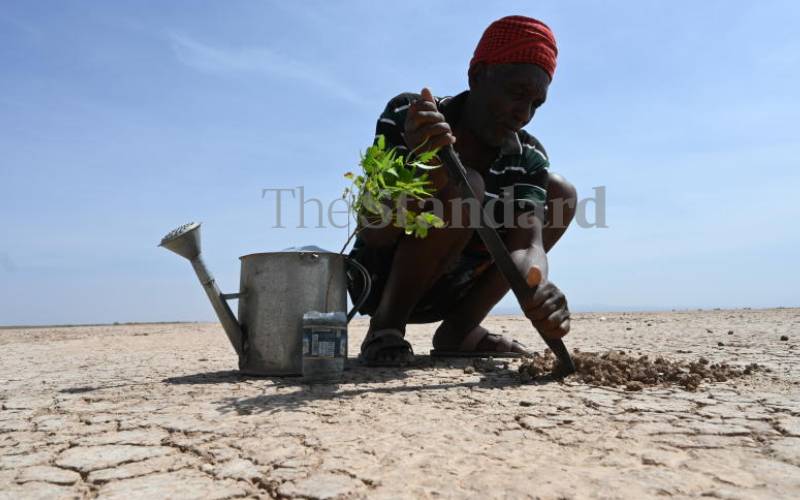×
The Standard e-Paper
Stay Informed, Even Offline

Dabaso Kantoma Sora planting a drought-resistant seedling at Chalbi desert, North Horr, Marsabit County. July 2021. [Denish Ochieng, Standard]
The 7th Devolution Conference in Makueni was an opportunity to review the outcomes of the 26th meeting by parties to the UNFCCC in the UK last November. Did we get anything in Glasgow? Vihiga Governor Wilber Ottichilo, who chairs CoG’s Environment and Climate Change Committee, spoke to The Standard on this and more.